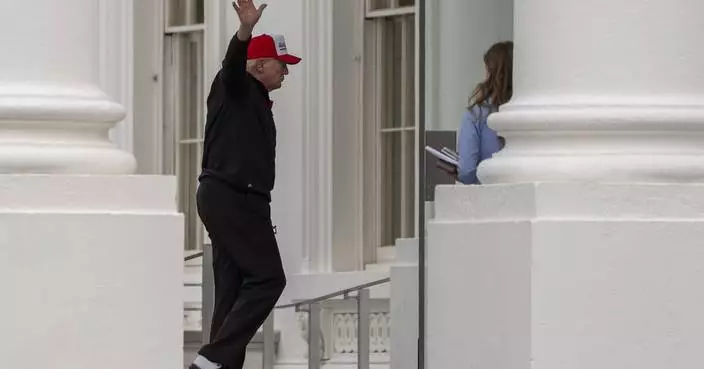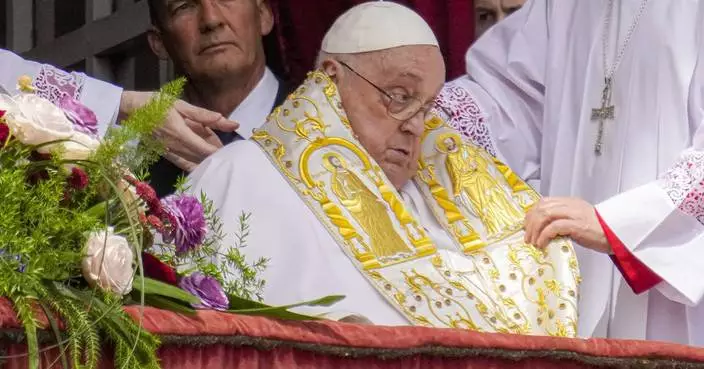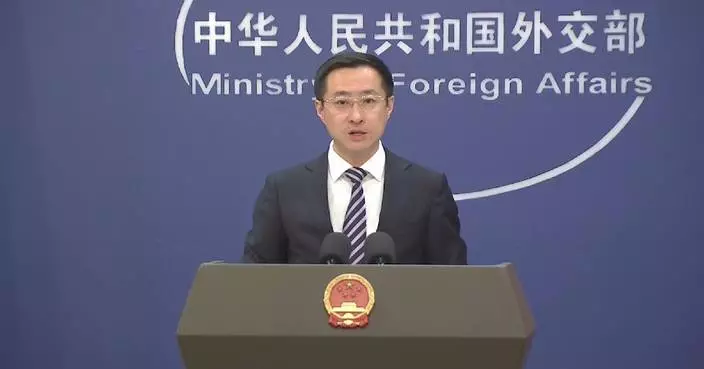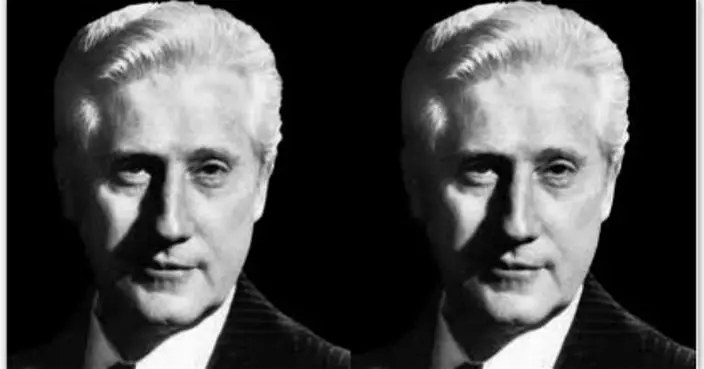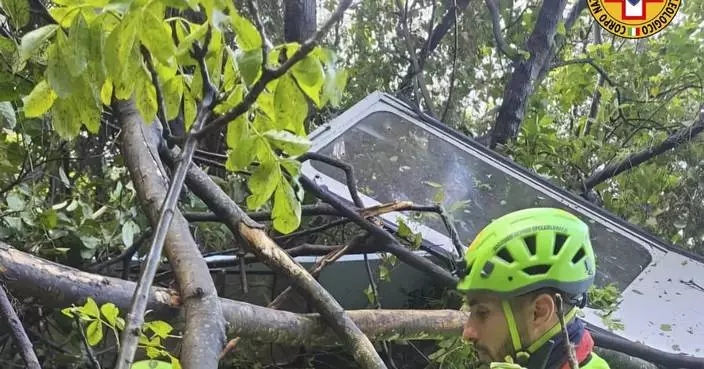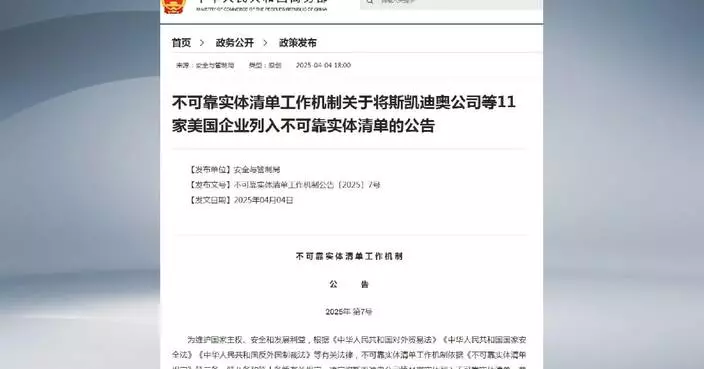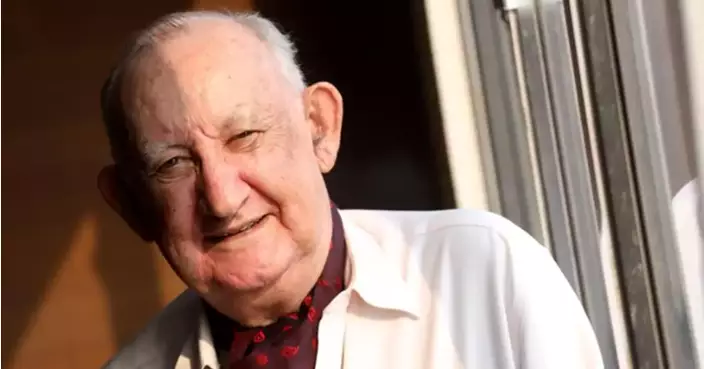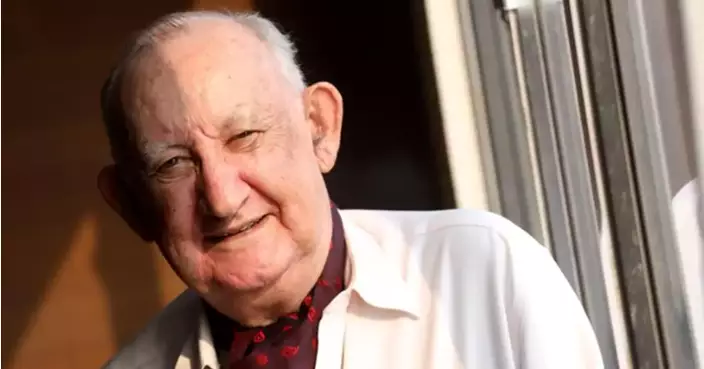WASHINGTON (AP) — The Army has made changes to how its helicopters use a safety system that broadcasts aircraft location and has reduced the number of flights over Washington following a collision with a passenger jet that killed 67 people, the head of Army aviation told The Associated Press on Tuesday.
Investigators are still determining why the Army helicopter and the American Airlines jet collided near Ronald Reagan National Airport on Jan. 29, but the Federal Aviation Administration has data showing an alarming number of close calls around the airport.
The safety system, called ADSB, short for Automatic Dependent Surveillance-Broadcast, has become a flashpoint as some have pointed to the likely lack of use by the Black Hawk helicopter that night as a potential cause of the crash.
The ADSB-out part of the system is designed to help air traffic controllers and nearby planes better track an aircraft’s location with position updates every second. But it can also allow anyone — including a plane enthusiast on the ground — know precisely where a helicopter or airplane is located. Army helicopters in the past have turned off the system for many missions because they were deemed sensitive.
The Army’s head of aviation, Brig. Gen. Matthew Braman, said there now will be fewer flights with the ADSB-out data turned off.
In the months since the crash, the Army has halted the vast majority of flights it was conducting for general officers ranked three stars and above, to ferry them from the Pentagon’s helipad to regional locations.
It has only resumed limited flights for the defense secretary, deputy defense secretary and chairman of the Joint Chiefs of Staff, while a limited number of other senior military leaders can fly from Virginia’s Fort Belvoir, Braman said.
The Army’s 12th Battalion is one of 28 agencies that used the low-altitude helicopter routes around Ronald Reagan National Airport. That includes the Department of Defense, individual military services, local, state and federal law enforcement agencies, emergency medical services, the National Guard, Coast Guard and others.
Before the collision, the Army was exempt from broadcasting ADSB-out data during sensitive missions, according to an August 2024 memo obtained by the AP. Those missions could include ferrying a senior leader or training for an emergency where transmitting a landing location could expose sensitive tactical information on reaction plans. The Army still has that exemption, but is making changes to how it flies so the exemption won't be used as often, Braman said.
In past training and evaluation flights — such as on the night of the crash — crews combined normal flight routes with practice landings at sensitive locations. That meant they had to fly with ADSB-out switched off for the whole flight, according to the memo.
Now crews are separating normal training and evaluation flights from flights that rehearse the classified continuity of government mission, Braman said. That reduces the number of flights where ADSB-out data will be turned off.
“If they are not going to one of those sensitive locations it should 100% be on,” Braman said.
It’s assumed the three Army crew who were killed in the crash were flying with ADSB-out turned off, but crash investigators have not concluded that yet, he said.
The other part of the system, ADSB-in, pulls in location data from nearby planes and helicopters. Few Army aircraft had ADSB-in, due to the cost, and were not required to have it. The Army has now authorized the purchase of 1,600 ADSB-in systems for its helicopter fleet.
Even if ADSB-out was off, the Black Hawk’s transponder was in use and transmitting its position, Braman said.
The FAA says ADSB-out data is more precise than the radar data communicated by a transponder, which depending on the mode in use can shield some aircraft information. The night of the crash, the Black Hawk was transmitting in three transponder modes — A, C, and S — which combined gave the helicopter’s identity, location and altitude. “There was no question where that aircraft was,” Braman said.
There was “no point” during the flight where the jet and the airport control tower could not see the Black Hawk, he said.
“I think there’s still a perception out there — I know there is — that the aircraft with ADBS-out in that segment around DCA were invisible. And that is so far from the truth,” Braman said.
As a result of the crash, the FAA has permanently closed a route along the Potomac River that directly intersected the flight path for the runway where January’s collision took place.

FILE - A piece of wreckage is lifted from the water onto a salvage vessel near the site in the Potomac River of a mid-air collision between an American Airlines jet and a Black Hawk helicopter, at Ronald Reagan Washington National Airport, Feb. 4, 2025, in Arlington, Va. (AP Photo/Ben Curtis, File)
Harvard University is defying the Trump administration’s demands to limit activism on campus and suing to halt a federal freeze on more than $2.2 billion in grants.
Vice President JD Vance continues his Asia tour amid uncertainty over tariffs.
Some 5.3 million student loan borrowers whose loans are in default could soon see their wages garnished by the Education Department.
And Defense Secretary Pete Hegseth is getting support in the White House after infighting and backstabbing within the Trump administration following media reports that he shared sensitive military details in another Signal messaging chat, this time with his wife and brother.
Here's the Latest:
The infighting and backstabbing that plagued Trump’s first term have returned as a threat to his second, with deepening fissures over trade, national security and questions of personal loyalty.
The latest turmoil threatens to engulf the Pentagon, where Defense Secretary Pete Hegseth has pushed out top advisers and faces fresh controversy over sharing sensitive information about airstrikes in Yemen outside of classified channels. A former Pentagon spokesperson who was ousted last week wrote in Politico that Trump should fire Hegseth for presiding over a “full-blown meltdown.”
The interpersonal drama is not — at least yet — a dominant plot line of Trump’s return to the White House. But its reemergence after a period of relative discipline in his ranks reflects a turbulent management style that has been suppressed or papered over, not reformed.
▶ Read more about the infighting within the Trump administration
Trump called the institutions “two really GREAT places” as he announced his upcoming schedule in a social media post.
It’s tradition for the commander in chief to speak at one of the military service academies and West Point’s commencement is May 24.
Alabama’s website says commencement ceremonies are May 2-4.
Vance held talks with Indian Prime Minister Narendra Modi on Monday as New Delhi looks to avoid American tariffs, negotiate a bilateral trade deal with Washington and strengthen ties with the Trump administration.
Vance, who is on a largely personal four-day visit to India, met with Modi at his residence in New Delhi and the two leaders “reviewed and positively assessed the progress in various areas of bilateral cooperation,” Modi’s office said in a statement. They also “welcomed the significant progress” in the negotiations of an expected trade deal between the two countries, the statement said.
The White House, in a statement, said that Vance and Modi set the terms for ongoing talks, “laying down a roadmap for further discussions.” It’s a sign that talks are moving forward but remain far from finalized, though Trump administration officials also spoke with their counterparts from India in a sign of the high level of engagement.
The Trump administration has portrayed its strategy of tariffs as forcing negotiations that could limit the reach and influence of China, the world’s dominant manufacturer.
▶ Read more about Vance and Modi’s meeting
Harvard University announced Monday that it has filed suit to halt a federal freeze on more than $2.2 billion in grants after the institution said it would defy the Trump administration’s demands to limit activism on campus.
In an April 11 letter to Harvard, the Trump administration had called for broad government and leadership reforms at the university and changes to its admissions policies. It also demanded the university audit views of diversity on campus and stop recognizing some student clubs. The administration has argued that universities allowed antisemitism to go unchecked at campus protests last year against Israel’s war in Gaza.
Harvard President Alan Garber said the university would not bend to the demands. Hours later, the government froze billions of dollars in federal funding.
Harvard’s suit called the funding freeze “arbitrary and capricious,” saying it violated its First Amendment rights and the statutory provisions of Title VI of the Civil Rights Act.
Within hours, the White House lashed back.
▶ Read more about the lawsuit

President Donald Trump arrives on the Blue Room Balcony to participate in the White House Easter Egg Roll Monday, April 21, 2025, in Washington. (AP Photo/Alex Brandon)
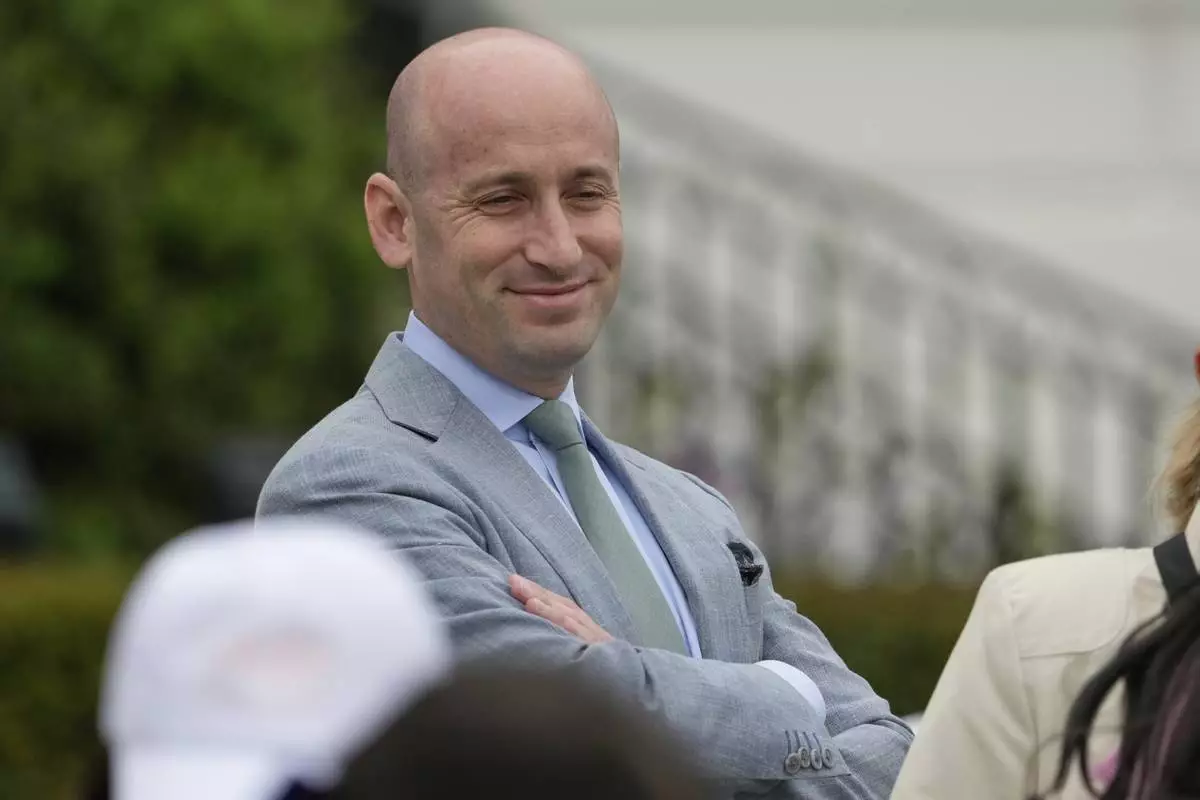
White House deputy chief of staff for policy Stephen Miller arrives on the South Lawn of the White House before President Donald Trump and first lady Melania Trump participate in the White House Easter Egg Roll Monday, April 21, 2025, in Washington. (AP Photo/Alex Brandon)

Defense Secretary Pete Hegseth speaks on the South Lawn of the White House before President Donald Trump and first lady Melania Trump participate in the White House Easter Egg Roll Monday, April 21, 2025, in Washington. (AP Photo/Alex Brandon)

President Donald Trump stands with the Easter bunny as he participates in the White House Easter Egg Roll on the South Lawn of the White House, Monday, April 21, 2025, in Washington. (AP Photo/Mark Schiefelbein)

President Donald Trump blows a gold plated whistle with the presidential seal, during the White House Easter Egg Roll on the South Lawn of the White House, Monday, April 21, 2025, in Washington. (AP Photo/Alex Brandon)















